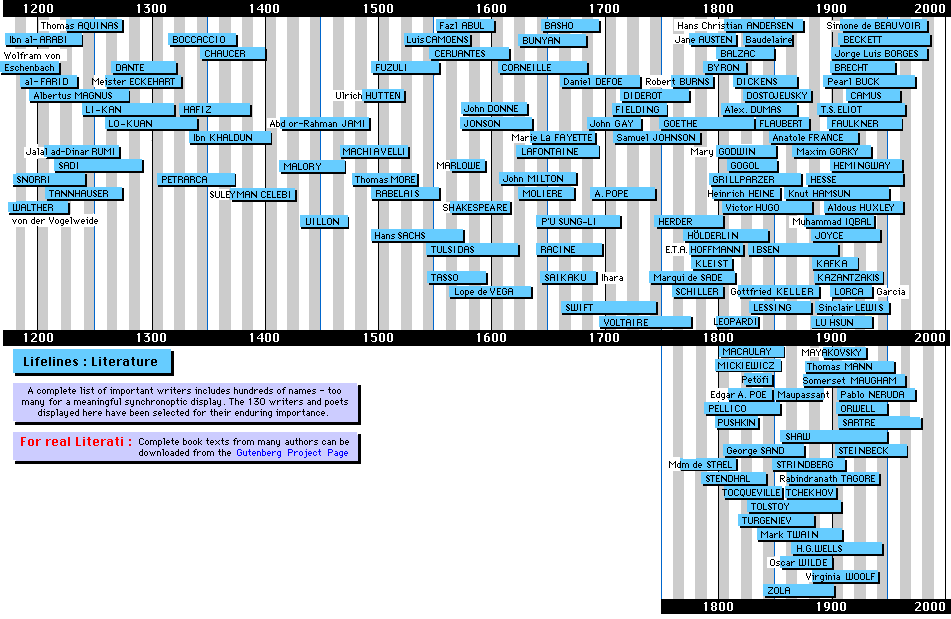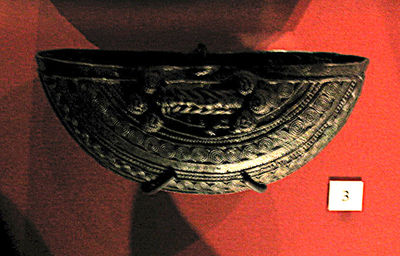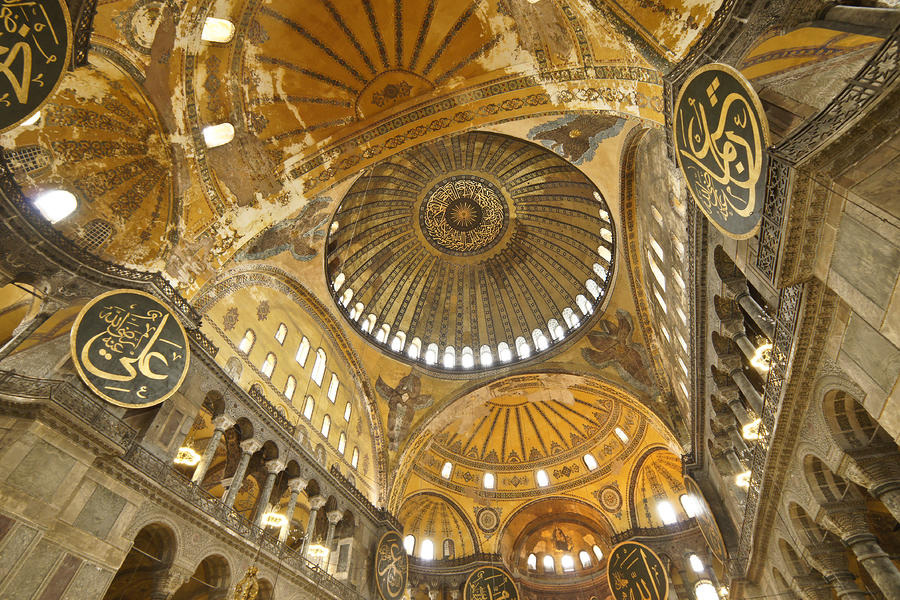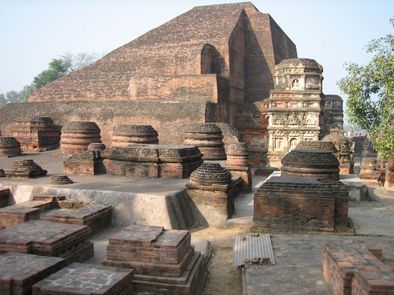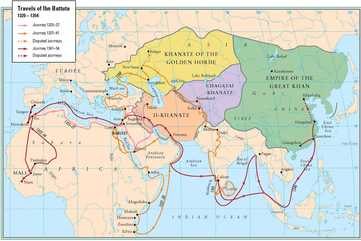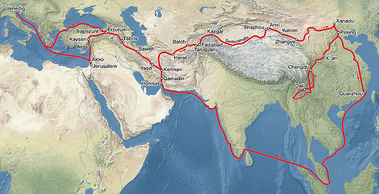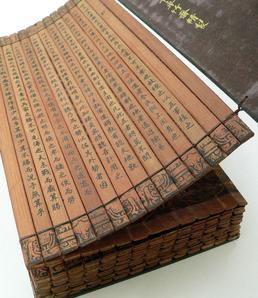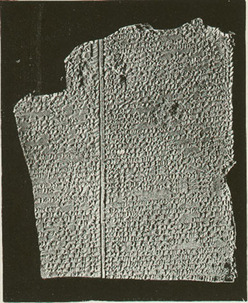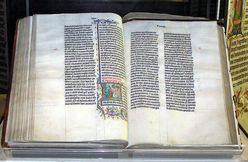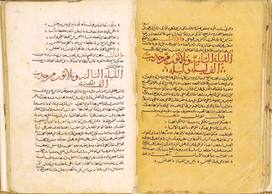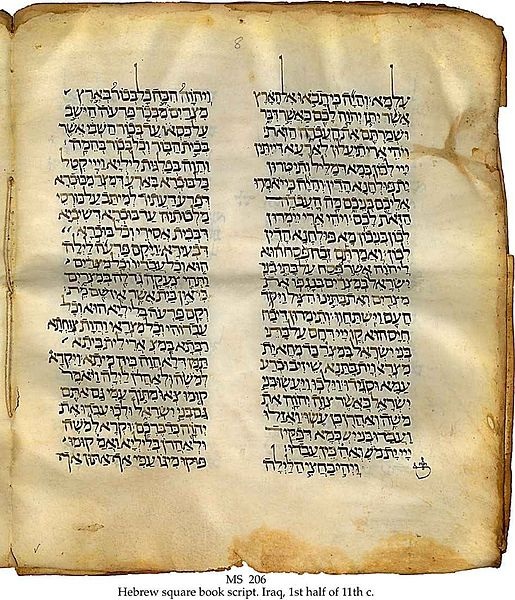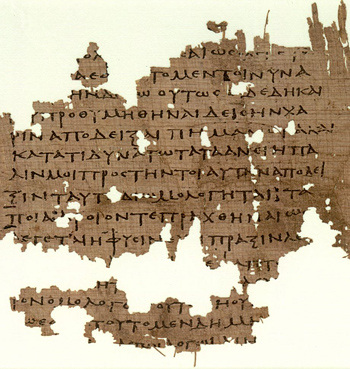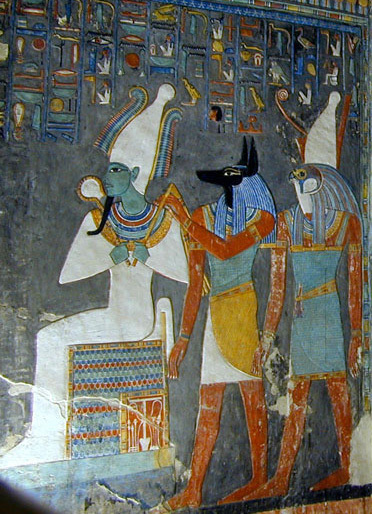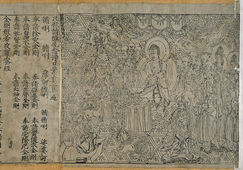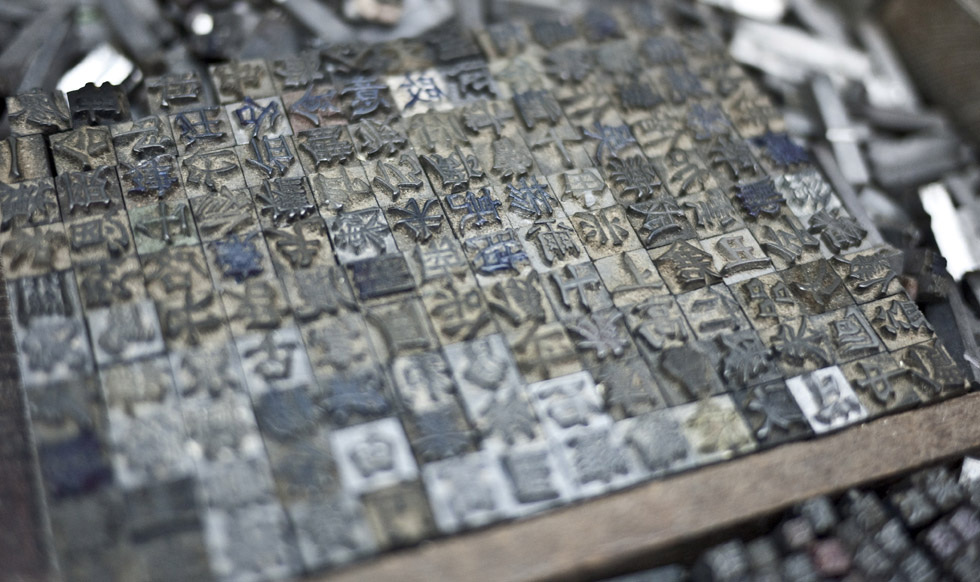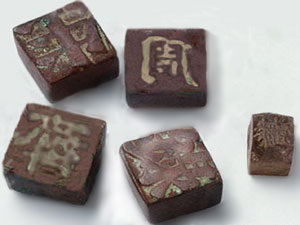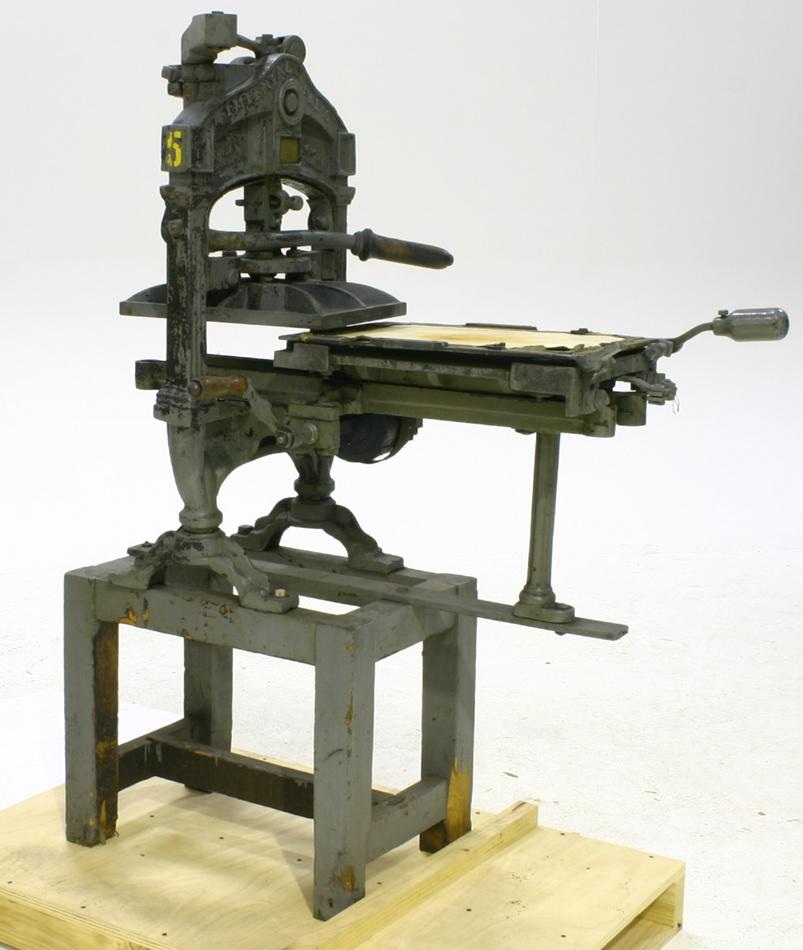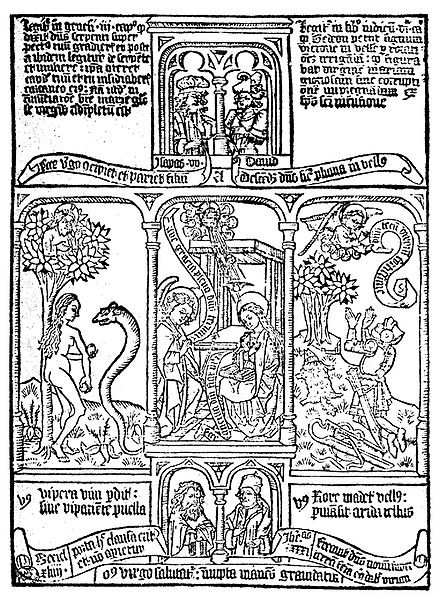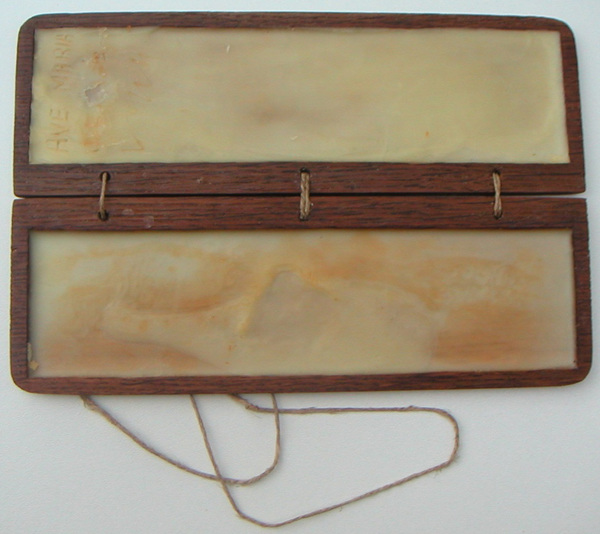Final AGMSPRITE Analysis: How Cultural Interactions Influenced Literature
Abbey Hager
The spread of literature was facilitated by trade connections. The first literature was religious based, and religious ideas as well as intellectual innovations spread along trade routes. Contact with other civilizations brought ideas, and their literature. When a merchant would see something interesting, or be told an interesting or inviting story, they themselves would write about it, or have someone else do it for them. This was seen by Marco Polo and Ibn Battuta's writings on China and the many things they experienced there. Literature, whether fiction or nonfiction, is based on experience, and the civilizations gained those experiences by meeting foreign cultures through trade and commerce.
ArtWith the expansion of literature, art also expanded. Literature needs educated, literate people to write it. Those people would need a place to be educated, like universities in India and Persia and Monasteries throughout Europe.
Educating citizens on literature shows an acceptance of the arts, which includes the visual arts and expressive literature. As trade expanded, trade fueled contacts between many parts of the world, making universities the focused center of learning. An example of this is the University at Nalanda, India. When Universities become more accessible, by having more knowledge available, more people attend it. When more people go to a university, literacy and intellect raise in that area. When literacy raises, more books are read, meaning more books have to be made. That increases profit for the printers, the paper making industry, and the printing tool makers. When profits increase and more books are made, literacy rises, as does the demand for more books, and the cycle continues. |
|
GeographyAs trade routes grew and become more established, merchants traveled on the trade routes for the purpose of figuring out the geography. When they sufficiently documented that geography and geology of the lands they saw, those merchants and travelers commissioned writers, or wrote about their findings themselves.
Merchant writers like Ibn Battuta and Marco Polo did just this, and brought back their findings through literature. When this literature was read, first by the high class, then as literacy levels rose the middle class, the people became interested in the foreign lands described. As interest grew, especially in the government, more trade and travel; expeditions were commissioned. These include Battuta and Polo, but later people like Christopher Columbus from Portugal, Vasco da Gama from Spain, and Zheng He from China. When these expeditions became more frequent, more trade routes were established, which raises the wealth in the main port and trade center cities. When wealth raises more trade is conducted, and wealth raises in turn. When wealth is high, literacy raises because Universities, like the one in Nalanda, become affordable to more people. When literacy and wealth are both high, quality of life for all people is proportionally higher. |
MilitaryLiterature was also used for military purposes. The first great author on military tactics and strategy was Sun Tzu, who wrote The Art of War. By trading with other nations, the Chinese received military knowledge, and in adding it to their own, commissioned Sun Tzu to write out their knowledge and tactics.
This allowed other generals and commanders to learn from what Tzu knew, and to advance their military knowledge must faster than other civilizations. This gave the Chinese a considerable advantage over their neighbors, namely the steppe nomads to the north, and allowed them to conquer other peoples. That conquest gave the Chinese further knowledge, technology, and goods, making them a more productive society as a whole. |
SocialSocially the influence on literature was lasting. Since literature portrayed the many ideas found on the trade routes, the people reading the literature could learn about those foreign cultures. That created interest in the exotic and foreign, making demand for literature higher.
That demand was only in a certain sector of society though, in most areas, not including Europe, only middle class and high class citizens read; peasants had no reason nor time to learn to read. In Europe literacy was even less common, where only those in the Clergy and very few aristocrats could read. A prime example of that lack of literacy is Charlemagne and the kings before him. Before Charlemagne, no leaders had attempted to learn to read, or to raise literacy in their kingdom. Charlemagne did just this; he created hundreds of royal schools available to everyone, in an attempt to raise literacy, which would raise productivity economically. Although it did little initially, it set a precedent of priorities in the state, which lead to higher literacy globally. |
PoliticsLiterature giving accounts of foreign government structures and practices were frequently read by surrounding states and implemented. Like Korea and Japan emulating China and Western Europe following ancient Greek texts found through trade with the southern nations that had contact with Islamic nations, literature written on foreign governments gave evolving states ideas to model their own off of.
This led to many states operating similarly, which created familiarity between those states. When states have more in common than other states, they are more inclined to do business with that state. That created specific trade connections and added to the already expensive global trade network. The expanding of trade networks allowed for more widespread globalization. The higher level of globalization in turn created more trade and commerce, which in turn increased globalization, and so on. |
ReligionReligion was the number one facilitator of literature. Like the Epic of Gilgamesh, the Vedas, the Torah, and the Bible, religious texts were the most common form of literature. Religious ideas were transported on trade routes, and when those ideas became widely adopted in a new area, the religious leaders copied down said religious ideas.
As religious literature spread to other areas besides it’s origin, like Buddhism spreading to China and Christianity to Ethiopia, it was adopted by the people. That lead to highly religious areas, like Christian Europe and Muslim Anatolia, which often fought against each other. The Crusades were a prime example of this, religious ideology caused two areas, Europe and Anatolia, to fight against each other. War means death, famine, and debt, but it also means trade and the exchange of ideas. When countries exchange ideas, technological and intellectual innovations increase, which raise the education and literacy of society, which raises the standard of living. |
|
IntellectMerchants and traders, a fore mentioned, would create literature about the findings of their travels. The writing about those foreign lands increased global knowledge in the reader. With the knowledge that there was a world around them, civilizations began to invest more money and time in navigation, astrology, and travel.
They needed places to teach the new found information, so enrollment in Universities grew, which increased the baseline education in society. When education and literacy are higher, intellectual pursuits can advance. This is evident in the European Renaissance, where art, architecture, health, and medicine all took drastic turns upwards. Using the Classical literature that the Europeans found in the Islamic nations, through trade connections, they fell back to the knowledge known then and added it to the advancements other states had made upon those ideas. When intellectual pursuits are expanded, the society can boast to be more advanced. Merchants and governments only want to trade with profitable and advanced nations, so trade focuses on the states with the highest intellectual capabilities. With more trade comes more wealth, which raises the baseline wealth f all people in the society. When baseline wealth is high, the state can afford a much higher standard of living, which creates healthier, longer living people. |
TechnologyAn increase in the demand for literature, mentioned earlier in the societal and artistic aspects, spurred technological innovations that would make producing literature easier. Early inventions like paper, block type print, and moveable type print (all of which were credited to China) were created to make printing literature easier and more cost effective.
When creating literature is less costly, printers will make more. When supply is high and prices are low, more people are willing to buy books. When literacy and education raise through acquisition of wealth by way of trade, people can actually read. When the reader base rises, printers need to be even more effective in their methods. That’s when they use their elevated education to create the Printing Press, cheaper inks, easier to make paper, and more effective methods of binding books. These all make books cheaper and faster to make, meaning they’ll be cheaper and more available to customers. Not only will they be available, but they will be in their vernacular, local language. Books that are cheap and that can be read by all people sell; that raises wealth and education, again making the standard of living higher for that society. |
|
